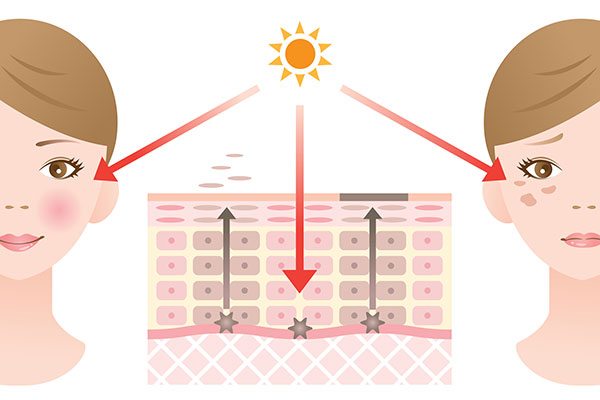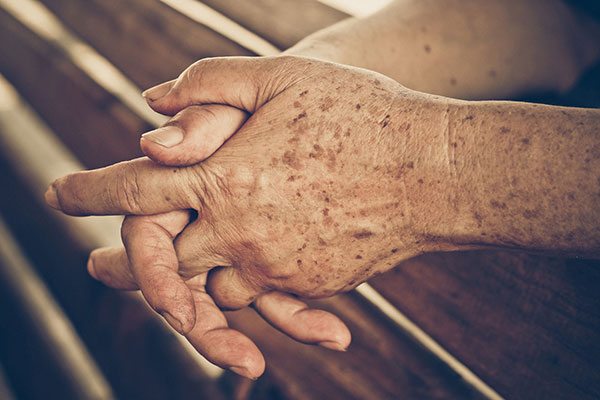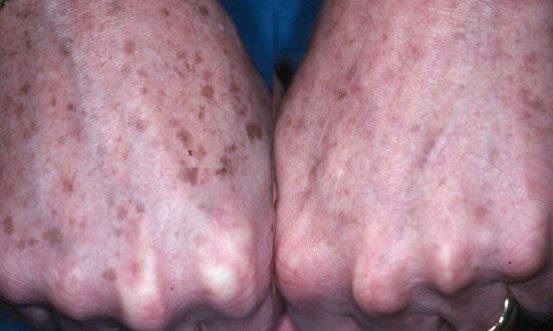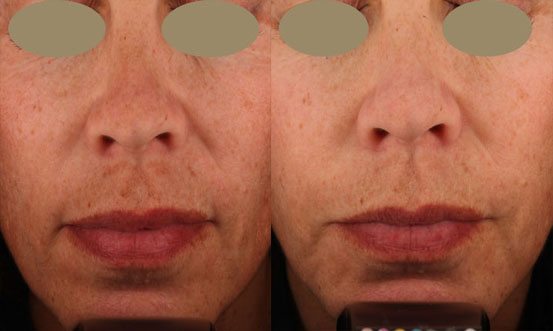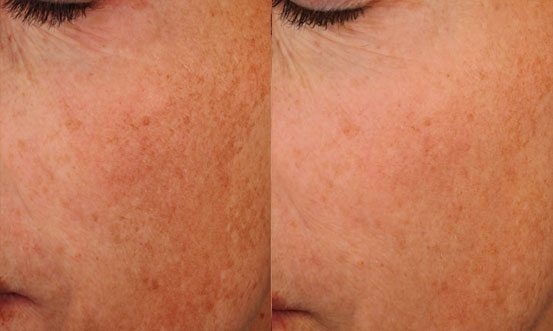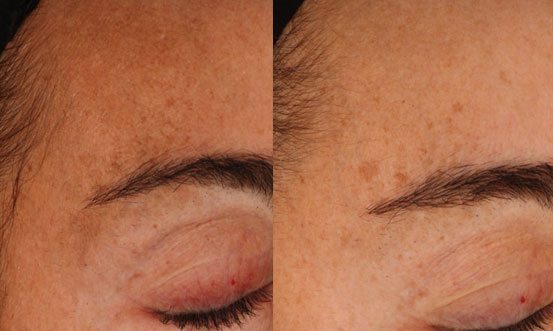Brown spots on our skin are often caused by sun damage, and are a key sign of skin aging. They need to be looked at regularly by a dermatologist to screen for skin cancer.
Brown spots often occur on the face, chest, arms and hands – clearly the areas with the most sun exposure. There are three main types of brown spots:
The most common types of brown spots are moles or nevi, freckles, lentigos, and seborrheic keratoses. Skin cancers can hide among these spots so it’s important to have a yearly skin exam. A dermatologist needs to examine your entire body, everywhere you have skin, which is obviously EVERYWHERE, at least once a year to screen for skin cancer.
Freckles are usually smaller than lentigos, but both of them are caused by the sun. Lentigos are different from freckles under the microscope, and for many people they simply look like ‘bigger’ freckles. Moles are different than freckles and lentigos and occur commonly on sun-damaged as well as sun-protected skin.
The great thing about freckles is that they’re brown, which makes them easily ‘seen’ by lasers. They also sit on the top of the skin, so they’re easily accessible. In general, freckles are relatively easy to treat, but it still takes a lot of skill to remove the brown spot without hurting the surrounding skin, and even more importantly, to know which spots are freckles and can be treated, and which ones need to be seen by a dermatologist. Generally, moles are not treated with lasers.
It’s important to have a medical professional who’s experienced at looking at the skin treat brown spots. Some brown spots should be followed by the dermatologist, sampled or biopsied, as opposed just being lasered off.
In most cases, brown spots are treated as part of a comprehensive treatment plan, together with other signs of aging, such as fine lines and wrinkles, enlarged pores, sagging skin and spider veins. Dermatologists typically use a combination of various lasers as an overall approach.
Freckles can be removed in one or a few treatments using special types of lasers, called Q-Switched lasers. These lasers administer an extremely short pulse of light that destroys the superficial pigment in a freckle, while allowing the normal skin pigment to come back. Immediately after treatment, freckles can look darker and scaly. This usually resolves in a period of approximately seven to ten days.
Some brown spots, such as seborrheic keratoses, are thick and harder to treat with lasers. They’re better treated by a dermatologist through freezing with liquid nitrogen, or they can simply be shaved off with a scalpel.
Nevi, or moles, should be seen by a dermatologist and generally are not treated with lasers. Dermatologists can remove moles by shaving them off or excising them, and closing the removal site with stitches, depending upon the type of mole.

